Stories
The Shrinking Swimsuit
1915-2015
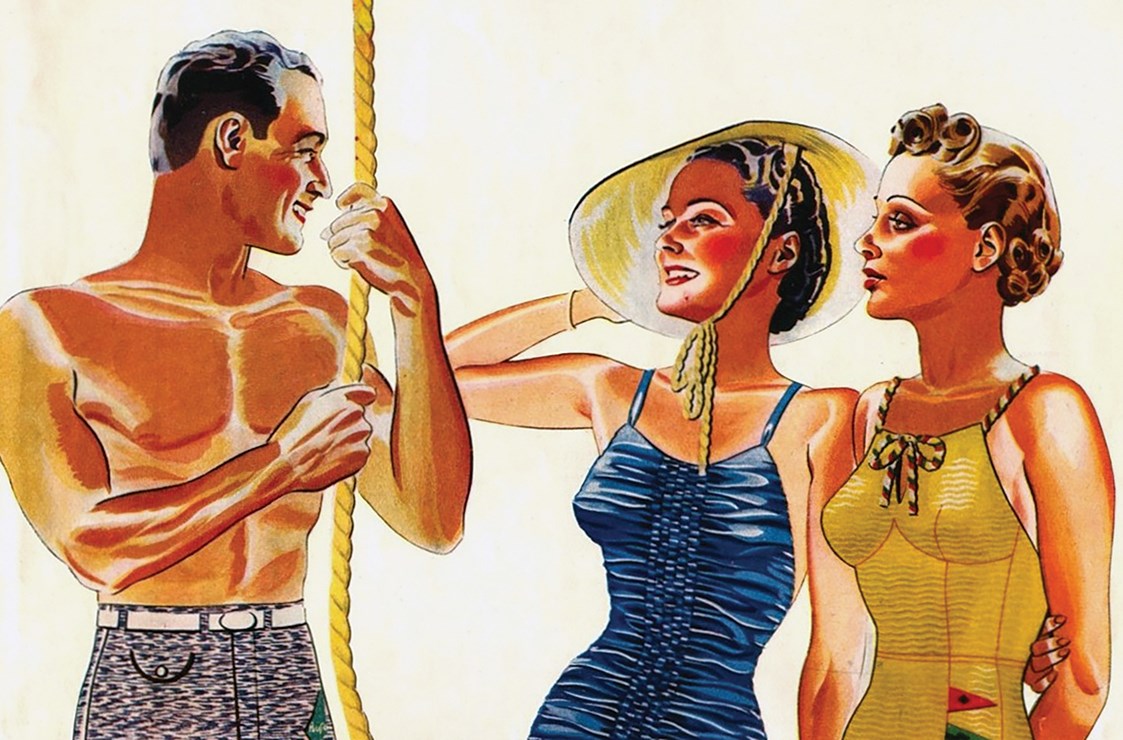
Through history our relationship to bathing has ebbed and flowed sometimes in favour and sometimes frowned upon.
When we again recognised the benefits of bathing in the sea in the late 1800s it was modesty and the beauty ideal of pale skin that dictated the appropriate fashion and proposed a costume in dark coloured fabric thick enough not to become see-through when wet. Once in the water these became heavy and not at all conducive to swimming so when the liberal young ladies of the 1920s wanted to be more active, they chose to adapt the smaller more fitted knitted woollen swimming suits worn by men to their own fashionable purpose.
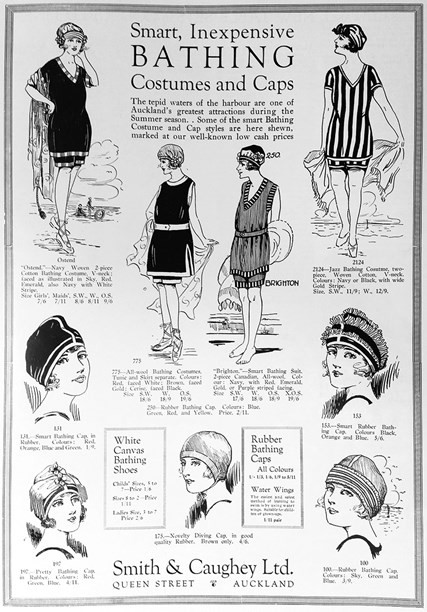
Fanciful swim-caps provided an extra touch of glamour for those wanting to look fashionable on the beach. Rubber bathing caps were also available for serious swimmers. Advertisement from The Ladies' Mirror, 1922.
The swimsuit continued its shrinking trajectory exposing more and more skin and finally, in the mid 1930s, it became acceptable for men to fully expose their torsos, although not their navels.
World War II and material shortages brought challenges with wool and elastic no longer readily available. But it also brought new freedoms in fashion and lifestyle for women. Taking on men's work also meant wearing the pants and a more active wardrobe. This translated to beach wear, which became more casual with the introduction of separates; shorts and tops that could be mixed and matched. Swimsuits too separated - cutting the middle section out saved material and made movement easier.
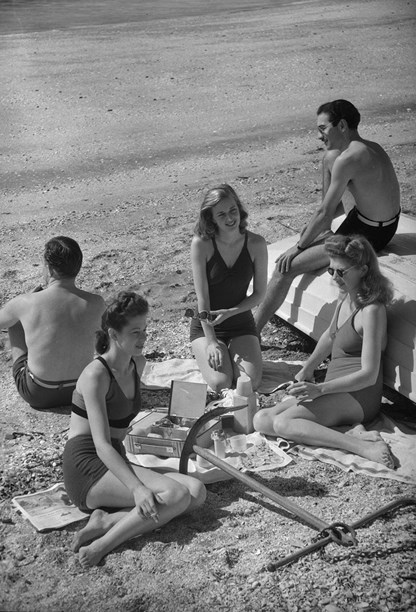
Models on the beach for a Korma Sweaters photoshoot by Clifton Firth, 1940s. Clearly Korma made more than just sweaters. Photo from Sir George Grey Special Collections, 34-K145A.
In the 1950s the economy was booming and from Hollywood films we copied the look of their curvaceous women stars and suave leading men, hoping to channel their glamour as we went swimming, sunning or sailing.

This Catalina brand 1950s playsuit has a maker's label that proclaims 'Styled by the stars of Hollywood'. It was made under licence in New Zealand by Lane Walker Rudkin. Image from Te Papa, GH017437.
By the 1960s, a youthful silhouette had replaced the well-rounded woman as the new fashion ideal. The modern bikini came to prominence in this decade inspired by wholesome California beach style as portrayed in films such as Gidget (1959). Ease, functionality, rich colours and textures are markers of this era.
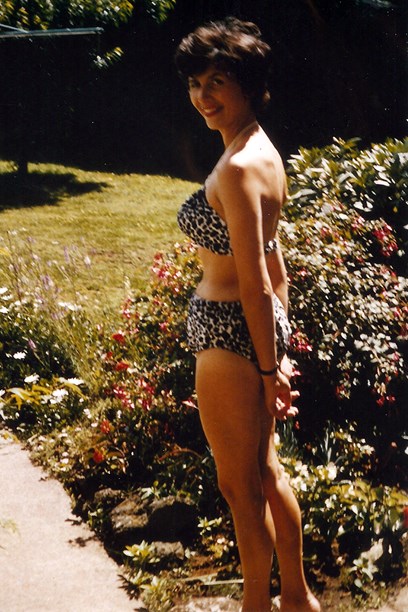
Beryl Hindle wore this Fantasy Fashions faux fur bikini in the late 1950s and early 1960s. Image © Beryl Hindle.
In the 1970s swimwear got smaller still and what we wore became more individual. Holiday clothes infiltrated the urban wardrobe: singlets, t-shirts, trousers for women, bare legs, sandals and jandals appeared as daywear on city streets.
In the 1980s, thanks to Lycra, the leakage from the beach to the street continued. Bold, bright swimsuits with high-cut legs were also worn for aerobics or as bodysuits under flamboyant skirts accessorised with big hair and bigger earrings. High fashion and beauty pageants were briefly aligned.
The obsession with physical fitness and body-shaping meant that the body became the key player in the fashion stakes with clothes assuming the role of accessory. New Zealand showed that it could cut it on the world stage. Lorraine Downes was crowned Miss Mount Maunganui in 1983 and later that year became Miss Universe. Her win was New Zealand's first in the pageant's history.
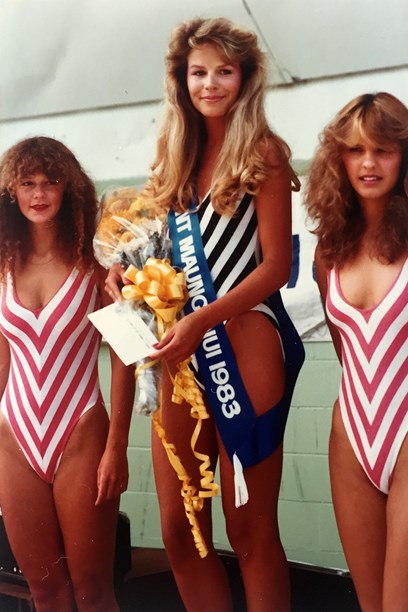
In 1983, Lorraine Downes won three titles - Miss Mount Maunganui, Miss Universe New Zealand and Miss New Zealand.
Auckland teenage model Rachel Hunter achieved global prominence appearing on the cover of magazines as diverse as Italian Vogue and Sports Illustrated.
In the 1990s, water-based activities such as triathlons and windsurfing saw the rise of practical one-piece suits designed for speed while the tankini and other separates allowed for personalised combinations and best fit, and rash shirts and other cover-ups offered protection from the sun.

Stolen Girlfriend's Club's Marc Moore started his fashion design career with these board shorts in 1998. He was surfing for T & C when they asked for his input into their collections.
Today swimwear is more a matter of personal choice than prescription with something for every taste and need.
Text by Doris de Pont. Banner image from The Mirror, December 1939. No known copyright.
Published February 2016.